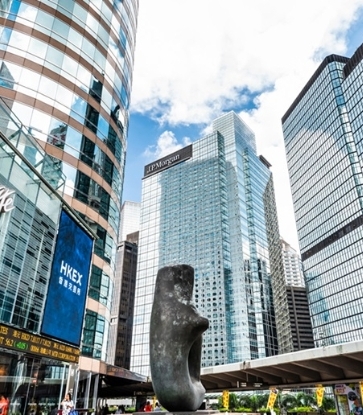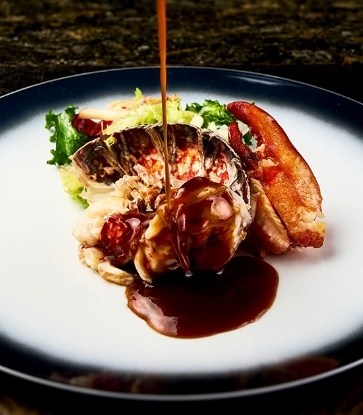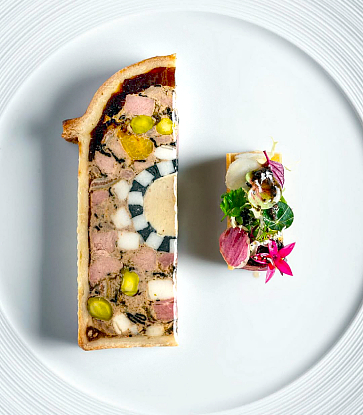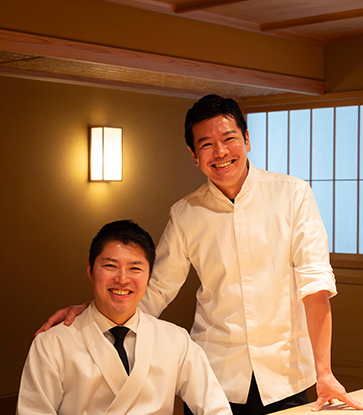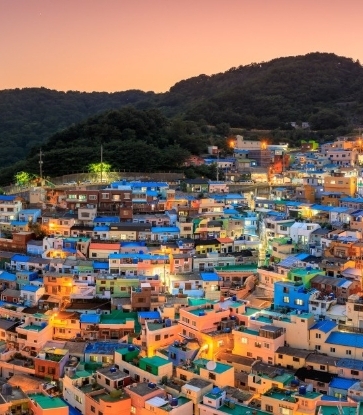The curtain rose on SÉN just as it was rising on 2025. Shortly after opening, the restaurant gained a MICHELIN Star, to which it now adds a MICHELIN Green Star. Born in London, Toshiharu Sunayama began his career in Japan, where he grew up, and later relocated to France. There he gained experience at MICHELIN-starred restaurants La Grenouillère in the north and Flocons de Sel in the southeast before returning to Japan. After working as a chef in a Kanazawa restaurant, he moved to the village of Tenkawa, in Nara Prefecture. His wife’s family ran a ryokan (a traditional inn) here, and for the two years before he opened his restaurant, he spent time planning, taking the time to get to know the local history, culture and atmosphere. Here the MICHELIN inspectors, who conducted their visit anonymously, share their full experience.

Arrival
The village of Tenkawa sits in the middle of the Kii Peninsula in Yoshino County, Nara Prefecture. It takes about two hours to get here by car from central Nara City. The location is surrounded by majestic mountains, including Mount Omine, known for its spiritual significance and centuries-old ascetic practices. Arriving at the restaurant, the modern copper doors and piled firewood create a strong impression. The chef’s wife greets us with a smile and shows us to a veranda overlooking the Tennogawa River. We are first served Kuromoji tea and a local Tenkawa dish called imobota (adzuki-bean covered glutinous rice balls). We relax to the sound of the nearby stream.
The dining room was the main hall of the ryokan, now renovated. Tables are set within a Japanese-style space, with views of the chef working in the open kitchen. Much of the flatware and serving ware comes from artisans he knew in Kanazawa — a reflection of how personal relationships continue to shape his approach to cooking.

The Team
In the kitchen, the chef is joined by a cook from Tenkawa, while his wife and a longtime acquaintance from his Kanazawa days handle service. These connections are not the result of chance — they reflect enduring relationships built on mutual gratitude. The chef also forms a quiet bond with guests who make the journey to this small village. The team shares the thinking behind each dish and their respect for the ingredients, while introducing visitors to the region’s traditions, events and everyday life.
Related: What is a Michelin Star?
The Food
The chef calls his approach “Watershed Cuisine,” focusing on ingredients from the Kumanogawa River basin, which connects Tenkawa to the sea. His dishes are rooted to the region, shaped around the four seasons and built around vegetables from local farmers and wild greens. The bounty of mountains and streams take center stage — red-spotted masu salmon and sweetfish from the rivers, along with venison and wild boar. Learning that this was a region where forestry flourished, hechooses to cook over wood fires, using thinned trees that help maintain the forestry business. Here, he creates one-of-a-kind dishes that fuse French techniques with his own unique sensibility. Through his set menus, he offers diners an opportunity to experience the local history and culture.
Dishes we sampled
The omakase menu lists only the ingredients, revealing nothing about the preparation. This sparks the imagination, leaving diners to anticipate what form the dish will take. From the variety of small portions we sampled, here are a few highlights.Botanjiru
Chef Sunayama had the idea to serve botanjiru, a local dish, during winter. Botanjiru is a soup made from wild boar stock, with boar fat, root vegetables such as burdock and carrots, and nameko mushrooms grown in the local villages. Its flavor and richly aromatic taste are reminiscent of consommé. The black lacquer Yoshino bowl, adorned with vermilion designs, reflects the restaurant’s connection to Yoshino County.
Doro Gorge Japanese mitten crab
The Doro Gorge is located along the Kitayamagawa river, straddling the next village of Totsukawa and the prefectures of Mie and Wakayama. The Japanese mitten crab caught here is prepared in a French-style bisque and paired with gnocchi of gingko nuts collected locally.
Next, we are served fresh-steamed bread with a delicate cedar aroma achieved by steaming it with Tenkawa cedar leaves.

Rain Fish
In Japan, the amago or red-spotted masu salmon can be written with the characters for “rain” and “fish,” named for how easily it can be caught during the rainy season, which starts in spring in Tenkawa. Three slices of amago are wrapped around a kuromoji twig, a native plant deeply rooted in local nature and culture, before being grilled. A puree of black garlic and a medicinal plant called kihada coats the surface, adding flavor. Served like a skewer, the aroma of the kuromoji wood is tantalizing. The head and bones are deep-fried to a fragrant crisp and arranged as a salad, making full use of the entire fish. Respect for the bounty of nature comes through strongly in this dish.
Takenoko-imo
This is a type of yam locally known as Takenoko-imo in Tenkawa. It’s stewed with cardamom, then deep-fried and caramelized with black sugar, served with mikan chutney. Inside the glass bowl a cocoa-flavored gelée is paired with pieces of hassaku pulp. The bitterness of the black sugar and the cocoa is balanced by the acidity of the citrus.
Sustainability
The perfect embodiment of a MICHELIN Green Star, Chef Sunayama practices a range of initiatives to help preserve the natural environment of Tenkawa and its surroundings. As well as using thinned timber for firewood, he also works with farmers and hunters, and lives in harmony with the ecosystems of mountains and rivers. Concerned about environmental impacts from the river to the sea, he is actively engaged in efforts to enhance the natural surroundings for future generations.
Visit
The Tenkawa Daibenzaiten Shrine honors the goddess of water, eloquence, wisdom, music, art and entertainment. A key site for Shugendō practice, it links the sacred areas of Yoshino and Kumano. Legend has it that Kūkai, also known as Kōbō Daishi, once stayed here to pray and meditate. Closely tied to Noh theater, the shrine is deeply respected as a spiritual home for the performing arts. Many well-known musicians have made the journey to this quiet, atmospheric site. If you’re in the area, it’s well worth a visit and is just ten minutes away from the restaurant by car.
Conclusion
Chef Sunayama creates dishes rooted in Tenkawa and shaped by his own journey. He draws inspiration from mountains and sea, and cooks over a wood fire, honoring both past and future. The SÉN logo represents the clear stream that flows through Tenkawa — a quiet symbol of the natural cycle.
The revitalization of regional Japan is a growing concern, and here it feels personal. When our inspector visited, new life was beginning — Madame Sunayama was expecting their son, the only child of his age at the school. Tenkawa is home to a way of life where food, place and people are deeply connected. As Madame Sunayama put it, “The Sunayama way of life is here.” Her words speak to a belief that the future lies in places like this, where people live closely with nature and carry wisdom forward through daily life.

Top Image: © SÉN




